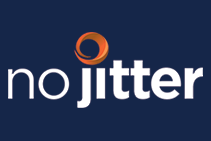For decades telecom functionality was hidden away in the ivory towers of carriers, their vendors, and their standards bodies. Enterprise communications was treated as the poor cousin of telcos, as it was the telcos’ vendors that created scaled down voice switching solutions for the enterprise market. However, in the past 10 years, we’ve seen a shift away from scaled down telco solutions, and instead a new industry of providers with Web- and enterprise-centric solutions sold in a Web-centric way. In the past five years alone, we’ve seen that Web-centric model get into gear and accelerate the rate of innovation, as sales and product development become increasingly agile. Now the model is to get an MVP (minimum viable product) to market, measure how it performs, and revise in months, not years. Enterprise communication is now on a much different trajectory than the telcos.
That means that enterprise communications is getting quite exciting. We’re witnessing a convergence across a number of traditionally separate solution areas: communications platform as a service (CPaaS), unified communications as a service (UCaaS, aka cloud PBX), contact center as a service (CCaaS) and basic enterprise communication services like VoIP and SIP trunking.
With services like
Ottspott, it’s now possible for an enterprise to run all its communications -- both PBX and contact center -- on platforms like Slack and Google G Suite. For small- and medium-sized businesses that are Web-centric (i.e. businesses generally less than 10 years old and not trapped by legacy desk phones), it's a no-brainer.
Enterprise communications provider Vonage has relatively recently bought up CPaaS players
Nexmo and
Tokbox and CCaaS player
NewVoiceMedia, building on its core VoIP service to now offer a number of high-value enterprise communications services. In the enterprise space, we’re seeing such convergence being essential to controlling costs, as the traditional telco model of reselling products and using channels to go to market gets significantly squeezed by Web-centric enterprise communications.
The confluence of CPaaS and UCaaS is driving lots of interesting innovations and bundles. In a way, the management console of UCaaS -- which is used to set up the employee's numbers and workflows -- has become a kind of store front to discover and set up a vast range of services, all integrated with the company’s workflows through APIs. At the TADHack-mini Orlando two years ago, first-time hacker Justin Haefner showcased the innovation that can arise from communications APIs. He created an application that showed how RingCentral’s platform can be used to solve complex problems across healthcare, security, and emergency services (learn more about his application
here).
Some CPaaS providers have built on top of their telecom app servers -- the fundamental building block of everything we’re discussing here -- applications known as “enablers.” For example, 2600Hz has built
Kazoo, and Twilio has built
Flex, which was
announced last year at Enterprise Connect. Think of these solutions as white-labelled UCaaS and CCaaS offers, making it easy for system integrators, managed service providers, and even tech-savvy enterprises to roll-their-own enterprise communications platforms. This vastly expands the addressable market of CPaaS providers, estimated to be at
$8 billion in 2021, into the $33 billion
UCaaS and $18 billion CCaaS markets.
These are only the first steps in the evolution of programmable communications. CPaaS providers, like VoIP Innovations with its
Showroom marketplace, are creating packages for different personas like developers, VARs, MSPs, and enterprises. Such efforts are making it even easier to get up and running with what you need and build out from there. The analogy I use is to modular construction that is revolutionizing the building industry. We’re at the beginning of a modular enterprise communications revolution, addressing the critical issues of simplicity, speed, and flexibility.
It's no longer only about the API, though it is a fundamental building block. At TADHack-mini Orlando 2019, taking place the weekend before Enterprise Connect 2019, people will be able to experience this breadth firsthand from sponsors VoIP Innovations, Flowroute, and TeleSign.
Hear more from Alan Quayle on the TADHack-mini Orlando in this podcast:
You can find out more information about the TADHack-mini Orlando and register to take part here. Winners of the hackathon will be showcasing their applications in the Enterprise Connect breakout session, “Hackathon Spotlight: Programmable Telecoms Is for Everyone,” taking place on Monday at 2:00. For all readers who have not yet registered for Enterprise Connect, coming to Orlando the week of March 18, register now to take advantage of our Early Bird Rate, which ends next Friday, Feb. 22. Use the code NJPOSTS at checkout to save an extra $200!










